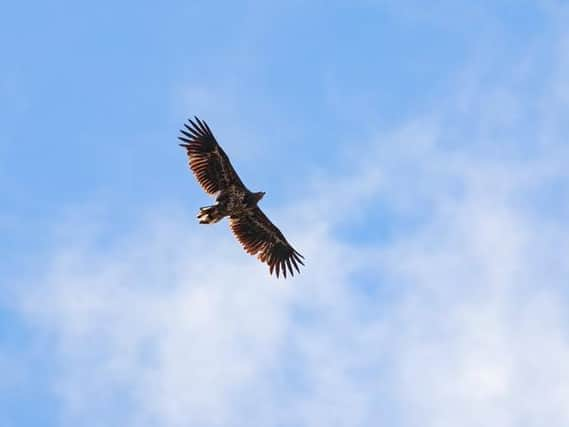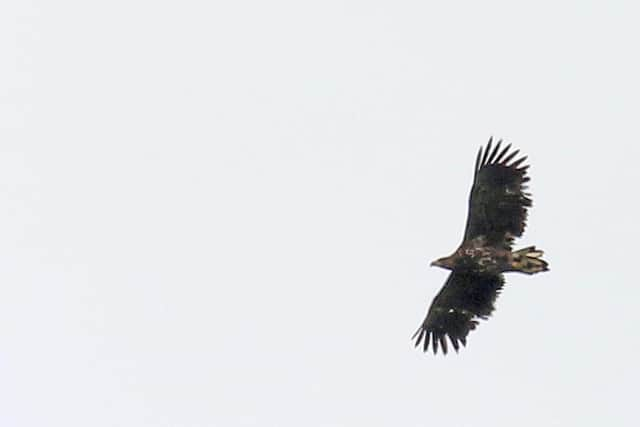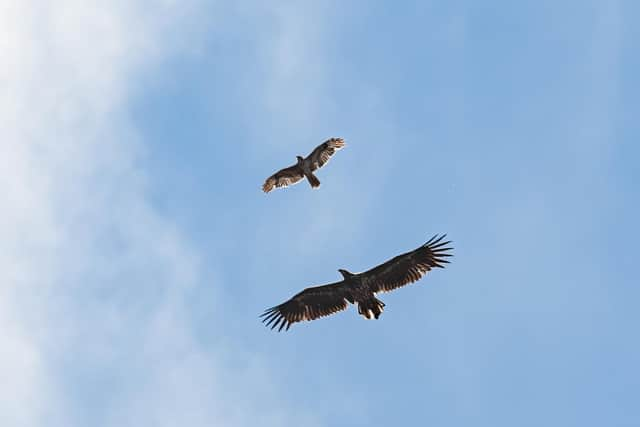New tracking data reveals sea eagles roosting in the North York Moors have actually roamed all over Yorkshire


The two juvenile birds - a male and a female, although they are not a breeding pair - flew north from the Solent reintroduction programme this spring and settled in the North York Moors National Park in April, where they enjoyed feasting on rabbits. They lived independently of each other but did interact.
They have been fitted with GPS trackers, and a new update published by the Roy Dennis Foundation now reveals the extent of their wanderings - with one of the birds having reached the Dales and settled at the northern tip of North Yorkshire, and the other having left the region.
Advertisement
Hide AdAdvertisement
Hide AdWhite-tailed eagles are native to Britain but were hunted to extinction by 1918, when the last bird was shot in Scotland, although they vanished from England in the 18th century. The young male and female come from a small population of four that was reintroduced to the Isle of Wight in the summer of 2019.


The juveniles spend the first few years of their life exploring before returning to their birthplace to breed when they are four to five years old.
The male, G393, spent most of the spring and summer in the North York Moors, but in July he flew south to Leicestershire, and on August 1 set off for the Norfolk Broads, where he has remained ever since. He was found to have spent much of his time near a reservoir where gull carcasses were also discovered.
The female, G318, arrived in the North York Moors on April 5, but did not meet the male until May 1. She is described as having been 'sedentary' during this period, living in quiet valleys, but in August began to range more widely. On August 31, she was tracked to Wetherby, before changing direction towards the Dales. She crossed the moors near Lofthouse and roosted in woodland near Gouthwaite Reservoir, having flown 55 miles in one day. The next day, she travelled to the Cumbrian border at Kirkby Stephen, and on September 3 headed back east across the Dales towards Richmond. Since then, she has remained in an area just beyond the northern boundary of the Yorkshire Dales National Park.
Advertisement
Hide AdAdvertisement
Hide AdA third white-tailed eagle from the original four released last summer spent several months in Scotland and has now returned to the Isle of Wight, but tracking data has now found that this bird also spent a considerable amount of time in Yorkshire during its return journey.


The young female, G324, is the most intrepid of the four birds, and after spending the summer in East Lothian, she began heading south on August 26. She entered Yorkshire on August 31, passing over Thirsk at an altitude of 1,200 metres. She roosted that night in a wood near Boroughbridge - and the GPS data showed she actually passed very close to the other female, G318, during the latter's journey from the North York Moors to the Dales.
G324 spent two days over farmland close to the River Swale before setting off again on September 3. She passed over York and the River Ouse at Goole, spending the night on farmland near Scunthorpe.